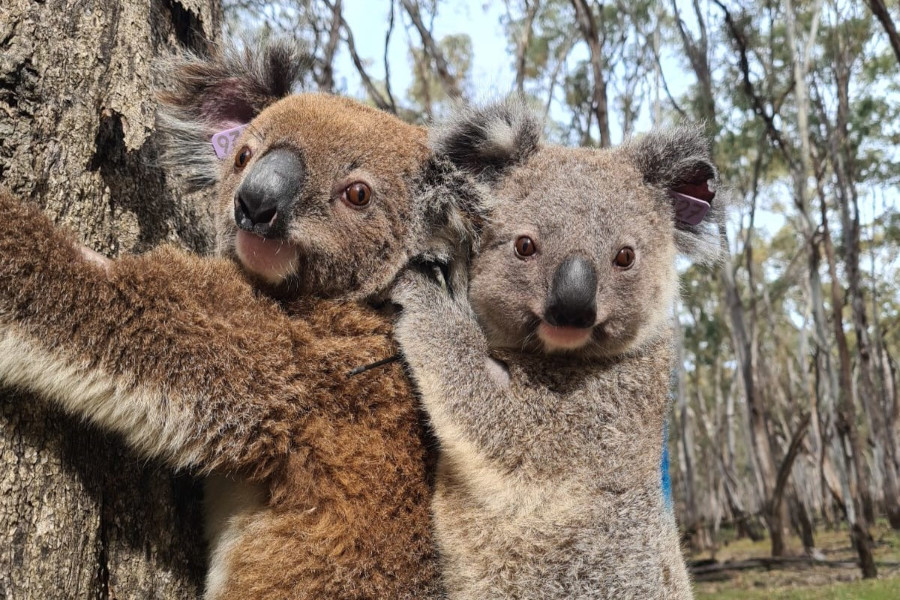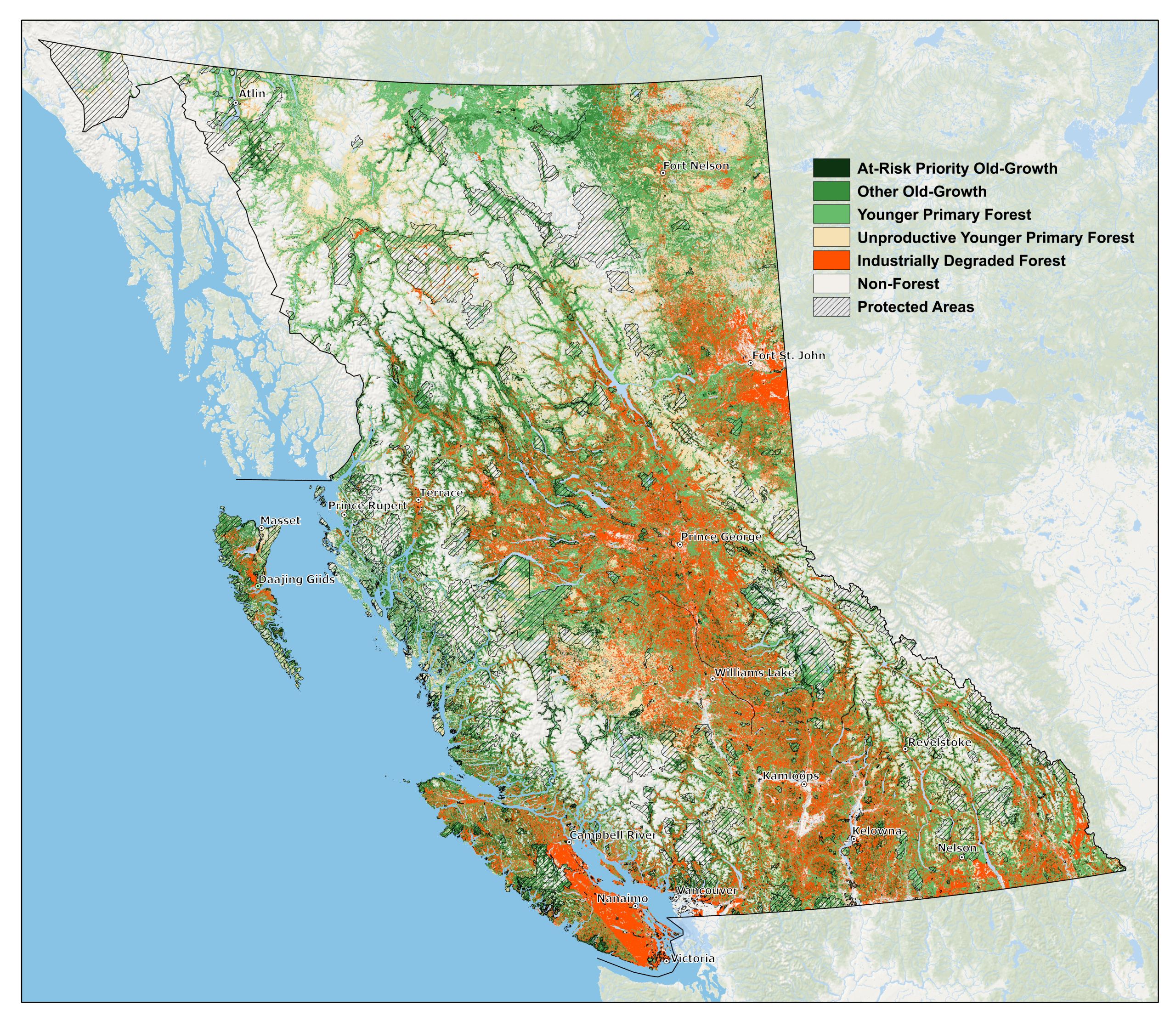 BC’s NDP government has recently lent a steadying hand to its beleaguered forestry sector, pausing stumpage fees, expediting permits and investing in mills to prevent its looming fall — but some say to no avail. “Why does it keep getting worse?” Prince George-Mackenzie Conservative MLA Kiel Giddens asked during the spring legislative session. …A new report commissioned by the Sierra Club BC points to a theory: BC’s supply of unlogged, high-value trees that industry has long relied on is dwindling, rendering short-term fixes and freebies inadequate. …Pressure on BC’s most at-risk forests appears to be intensifying. The report says the province’s efforts to temporarily pause logging in rare forests through old-growth deferrals have failed. Instead, BC forests were four times more likely to be logged inside recommended deferral zones than outside over the past four years. …The report suggests BC’s century-long feast on big, old trees is approaching its end.
BC’s NDP government has recently lent a steadying hand to its beleaguered forestry sector, pausing stumpage fees, expediting permits and investing in mills to prevent its looming fall — but some say to no avail. “Why does it keep getting worse?” Prince George-Mackenzie Conservative MLA Kiel Giddens asked during the spring legislative session. …A new report commissioned by the Sierra Club BC points to a theory: BC’s supply of unlogged, high-value trees that industry has long relied on is dwindling, rendering short-term fixes and freebies inadequate. …Pressure on BC’s most at-risk forests appears to be intensifying. The report says the province’s efforts to temporarily pause logging in rare forests through old-growth deferrals have failed. Instead, BC forests were four times more likely to be logged inside recommended deferral zones than outside over the past four years. …The report suggests BC’s century-long feast on big, old trees is approaching its end.

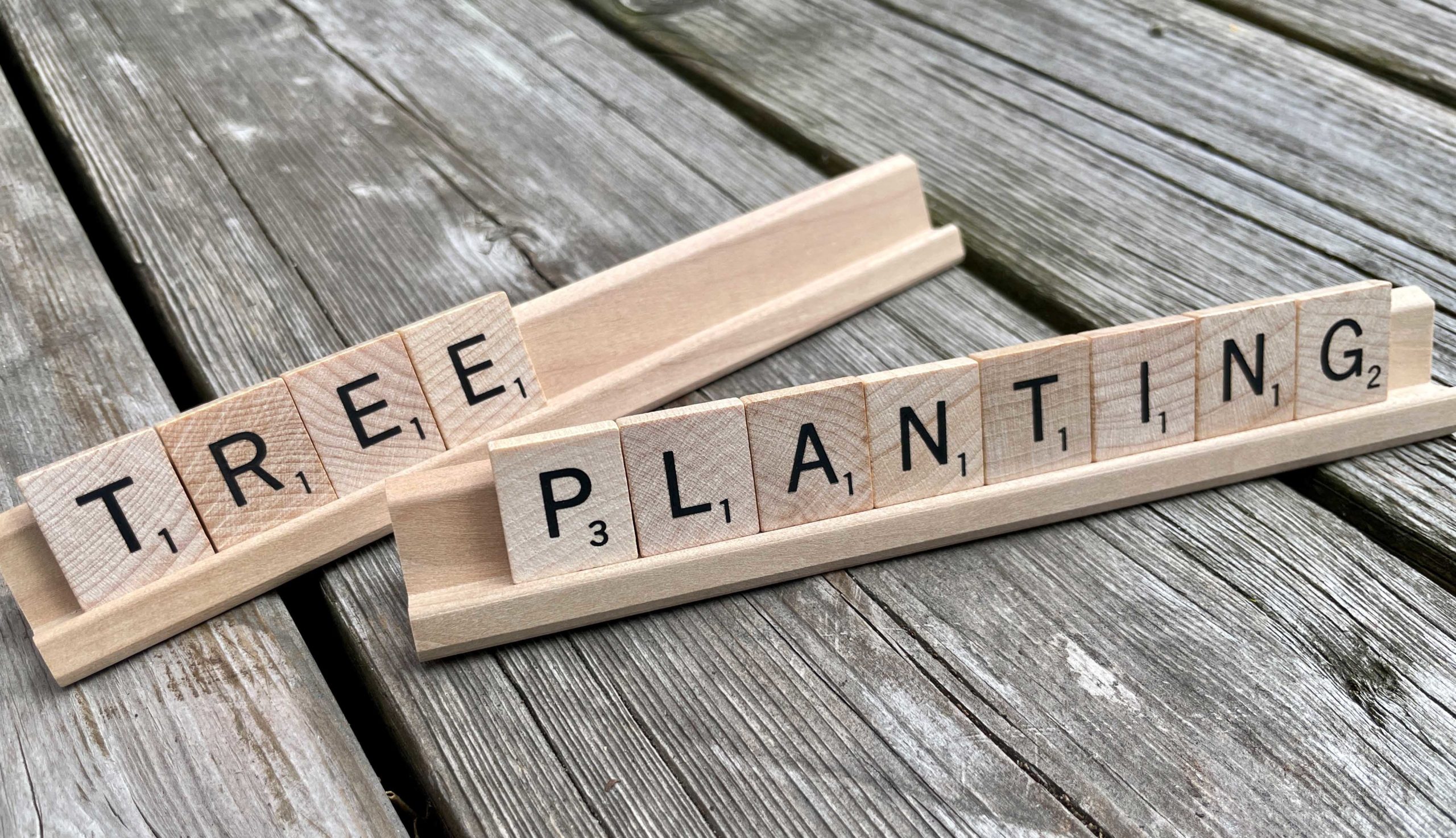 The Liberal government is dropping its goal to plant two billion trees by 2031 as part of Tuesday’s budget, according to sources familiar with the matter. The government currently has contracts that they intend to fulfil to plant one billion trees, one source said. The news was first reported by the Globe and Mail. Prime Minister Mark Carney said last month that the budget will include a “climate competitiveness strategy.” But this is another key Trudeau-era climate policy that Carney has dropped since becoming leader, after ending the consumer carbon tax and pushing back the electric-vehicle sales mandate. …The government has struggled to keep up with the commitment, missing its annual planting targets in the past two years. Over 228 million trees have been planted so far, according to Natural Resources Canada’s latest update — leaving more than 1.7 billion in order to reach the target by 2030-31.
The Liberal government is dropping its goal to plant two billion trees by 2031 as part of Tuesday’s budget, according to sources familiar with the matter. The government currently has contracts that they intend to fulfil to plant one billion trees, one source said. The news was first reported by the Globe and Mail. Prime Minister Mark Carney said last month that the budget will include a “climate competitiveness strategy.” But this is another key Trudeau-era climate policy that Carney has dropped since becoming leader, after ending the consumer carbon tax and pushing back the electric-vehicle sales mandate. …The government has struggled to keep up with the commitment, missing its annual planting targets in the past two years. Over 228 million trees have been planted so far, according to Natural Resources Canada’s latest update — leaving more than 1.7 billion in order to reach the target by 2030-31.
 Biologist Amber Peters and the Valhalla Wilderness Society (VWS) screened their highly-anticipated film, Safe Haven: The Rainbow-Jordan Wilderness, about the biodiverse and nearly-untouched inland temperate rainforest just north of Revelstoke. “This is the best example of a fully-intact inland temperate rainforest,” Peters said. … The Rainbow-Jordan is likely “the largest pocket of intact temperate rainforest in the region” around Revelstoke, Wildsight Revelstoke branch manager Reanne Harvey said. “The forest itself has been in that space for over a thousand years.” … The 30-minute film, produced in collaboration with Damien Gillis, advocates for the B.C. government to protect these expanses of hard-to-access and undisturbed old-growth from logging as a Class A provincial park. Unlike an old-growth protected area or Indigenous Protected and Conserved Area, park status would ensure legislated protection for the Rainbow-Jordan, Peters told some 200 attendees at the screening.
Biologist Amber Peters and the Valhalla Wilderness Society (VWS) screened their highly-anticipated film, Safe Haven: The Rainbow-Jordan Wilderness, about the biodiverse and nearly-untouched inland temperate rainforest just north of Revelstoke. “This is the best example of a fully-intact inland temperate rainforest,” Peters said. … The Rainbow-Jordan is likely “the largest pocket of intact temperate rainforest in the region” around Revelstoke, Wildsight Revelstoke branch manager Reanne Harvey said. “The forest itself has been in that space for over a thousand years.” … The 30-minute film, produced in collaboration with Damien Gillis, advocates for the B.C. government to protect these expanses of hard-to-access and undisturbed old-growth from logging as a Class A provincial park. Unlike an old-growth protected area or Indigenous Protected and Conserved Area, park status would ensure legislated protection for the Rainbow-Jordan, Peters told some 200 attendees at the screening.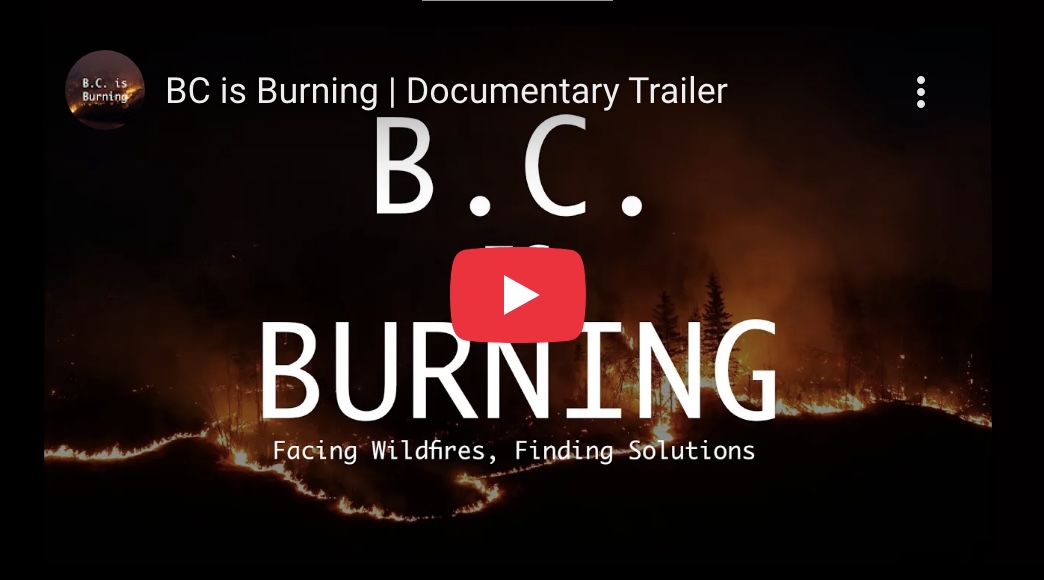 Murray Wilson believes active forest management is crucial to reducing greenhouse emissions. The connection between the two is wildfires. “If you can reduce wildfires, just on carbon alone – your CO2 emissions – you’re doing a good thing,” said the retired Vernon forester… For the past year, Wilson has been sharing this message, about the need for active forest management, with residents and politicians through his new and first film, the documentary B.C. is Burning. …The Shuswap Climate Action Society, Forsite Consultants Ltd. and Canoe Forest Products will present the film in Salmon Arm on Nov. 26, with a Q&A moderated by Salmon Arm Mayor Alan Harrison. …Wilson will be screening the documentary at the B.C. Legislature. He said government officials, including B.C. Wildfire assistant deputy minister Rob Schweitzer, featured in the film, have taken part in past screenings and question periods. He views this as a sign the documentary is resonating with the Province.
Murray Wilson believes active forest management is crucial to reducing greenhouse emissions. The connection between the two is wildfires. “If you can reduce wildfires, just on carbon alone – your CO2 emissions – you’re doing a good thing,” said the retired Vernon forester… For the past year, Wilson has been sharing this message, about the need for active forest management, with residents and politicians through his new and first film, the documentary B.C. is Burning. …The Shuswap Climate Action Society, Forsite Consultants Ltd. and Canoe Forest Products will present the film in Salmon Arm on Nov. 26, with a Q&A moderated by Salmon Arm Mayor Alan Harrison. …Wilson will be screening the documentary at the B.C. Legislature. He said government officials, including B.C. Wildfire assistant deputy minister Rob Schweitzer, featured in the film, have taken part in past screenings and question periods. He views this as a sign the documentary is resonating with the Province. Local residents are invited to share their input on the development of the Mackenzie forest landscape plan (FLP), which will guide long-term forest management in the area. “This is an opportunity for Mackenzie residents to share what matters most about your forests,” said Ravi Parmar, Minister of Forests. “Forests are part of who we are and your voices guide how they’re managed.” People can share their thoughts through a survey, open from Monday, Nov. 10 until Dec. 22, 2025. …FLPs are intended to be developed in partnership with First Nations to ensure meaningful participation in forestry planning and decision-making. Tsay Keh Dene Nation has partnered with the Province on the Mackenzie FLP. Engagement with other First Nations in the area continues. Community engagement is also a key part of every FLP, ensuring everyone in the area has an opportunity to be heard.
Local residents are invited to share their input on the development of the Mackenzie forest landscape plan (FLP), which will guide long-term forest management in the area. “This is an opportunity for Mackenzie residents to share what matters most about your forests,” said Ravi Parmar, Minister of Forests. “Forests are part of who we are and your voices guide how they’re managed.” People can share their thoughts through a survey, open from Monday, Nov. 10 until Dec. 22, 2025. …FLPs are intended to be developed in partnership with First Nations to ensure meaningful participation in forestry planning and decision-making. Tsay Keh Dene Nation has partnered with the Province on the Mackenzie FLP. Engagement with other First Nations in the area continues. Community engagement is also a key part of every FLP, ensuring everyone in the area has an opportunity to be heard. 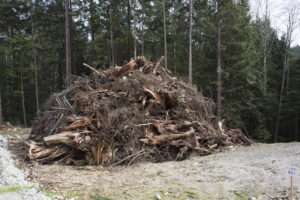 A First Nations joint-venture forestry company is under fire for its burning practices. C̕awak ʔqin Forestry recently lit up a series of burn piles only a few metres from where a local company turns post harvest wood waste into much needed hogfuel for the Catalyst paper mill. Under provincial guidelines, forest harvesters are supposed to look for grinding or chipping opportunities ahead of burning. Keith Wyton from the local air quality council says local governments should push foresters to not burn. …Forest companies are allowed to pile and burn slash at this time of year, but Wyton wants the BC Government to step in. …C̕awak ʔqin General Manager Geoff Payne said they were operating within provincial guidelines and were permitted to burn. C̕awak ʔqin Forestry is a joint venture between Western Forest Products and the Huu-ay-aht First Nation.
A First Nations joint-venture forestry company is under fire for its burning practices. C̕awak ʔqin Forestry recently lit up a series of burn piles only a few metres from where a local company turns post harvest wood waste into much needed hogfuel for the Catalyst paper mill. Under provincial guidelines, forest harvesters are supposed to look for grinding or chipping opportunities ahead of burning. Keith Wyton from the local air quality council says local governments should push foresters to not burn. …Forest companies are allowed to pile and burn slash at this time of year, but Wyton wants the BC Government to step in. …C̕awak ʔqin General Manager Geoff Payne said they were operating within provincial guidelines and were permitted to burn. C̕awak ʔqin Forestry is a joint venture between Western Forest Products and the Huu-ay-aht First Nation.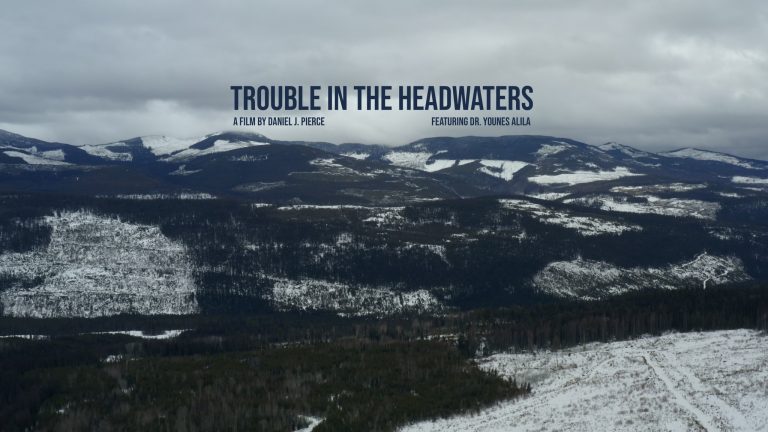 Trouble in the Headwaters, a 25-minute documentary by Daniel J. Pierce, is coming to Golden! This film sheds light on the disastrous 2018 flood event in Grand Forks, BC, and features UBC forest hydrology and watershed management Professor Dr. Younes Alila. Both Daniel and Younes will be present to introduce the film and answer questions afterwards as part of a panel discussion with local experts and Wildsight’s forestry team. Join us to explore the complex connection between clearcut logging and the increasing frequency of floods, landslides and droughts across our province.
Trouble in the Headwaters, a 25-minute documentary by Daniel J. Pierce, is coming to Golden! This film sheds light on the disastrous 2018 flood event in Grand Forks, BC, and features UBC forest hydrology and watershed management Professor Dr. Younes Alila. Both Daniel and Younes will be present to introduce the film and answer questions afterwards as part of a panel discussion with local experts and Wildsight’s forestry team. Join us to explore the complex connection between clearcut logging and the increasing frequency of floods, landslides and droughts across our province. 
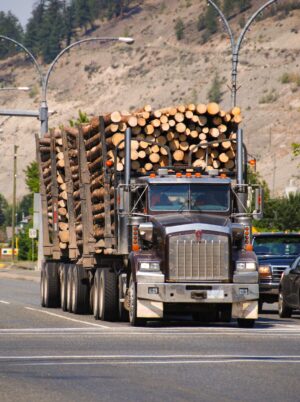 ALBERTA — Crowsnest Pass, the lowest pass through the Rocky Mountains between New Mexico and Jasper National Park, is home to Alberta’s rarest, most tree-species-rich forest. Some species growing here are as rare in Alberta as sage grouse and woodland caribou. …Trees don’t thrive within this forest. They cling to life. …A question I’ve long posed to society and the managers of southwestern Alberta’s matchstick forest is this: Is it economically viable to manage this forest for timber production? …Some years ago, I was selected to sit on a Government of Alberta advisory committee creating a vision for future management of this forest. …Alberta’s forest managers, responding to the problem they helped create, have now placed a new prescription on the pharmacist’s cutting block. The old prescription — clear-cut logging. The new prescription — profoundly expanded clear-cut logging.
ALBERTA — Crowsnest Pass, the lowest pass through the Rocky Mountains between New Mexico and Jasper National Park, is home to Alberta’s rarest, most tree-species-rich forest. Some species growing here are as rare in Alberta as sage grouse and woodland caribou. …Trees don’t thrive within this forest. They cling to life. …A question I’ve long posed to society and the managers of southwestern Alberta’s matchstick forest is this: Is it economically viable to manage this forest for timber production? …Some years ago, I was selected to sit on a Government of Alberta advisory committee creating a vision for future management of this forest. …Alberta’s forest managers, responding to the problem they helped create, have now placed a new prescription on the pharmacist’s cutting block. The old prescription — clear-cut logging. The new prescription — profoundly expanded clear-cut logging.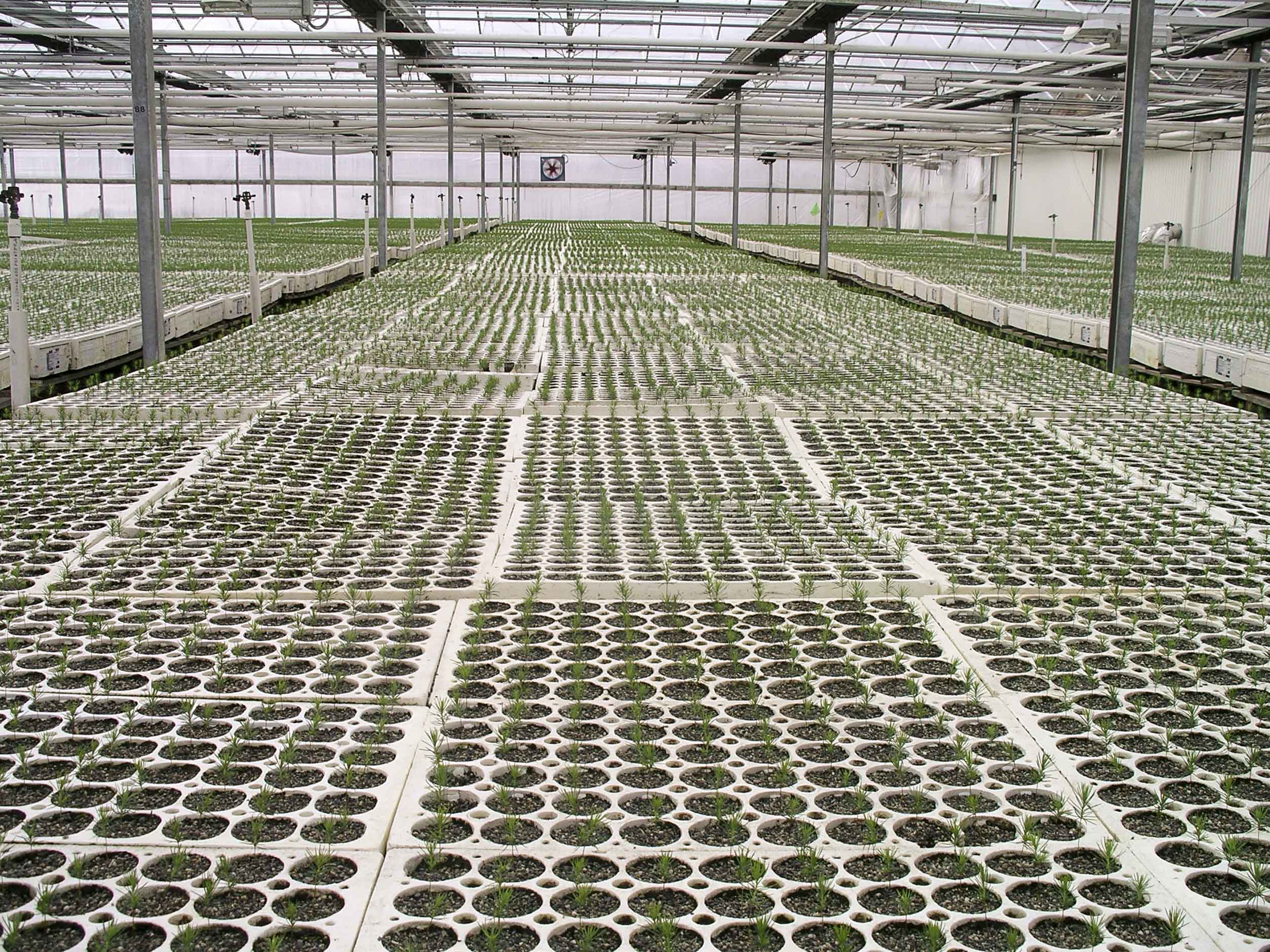 The PRT tree seedling nursery …with locations in Canada and the United States is North America’s largest producer of container-grown forest seedlings. …But at time when the forestry sector is facing hurdles such as softwood lumber duties and new American tariffs, the 2 Billion Trees program will be scrapped in the proposed federal 2025 budget. …a billion trees would have been grown from seed in nurseries like PRT and then planted across Canada. …Brinkman Reforestation is the largest tree planting company in Canada and says the industry is facing enough hurdles without having the 2 Billion Trees program cancelled. …In Black Creek, three generations of the same family have been growing tree seedlings at Sylvan Vale Nurseries. …manager Siriol Paquet says extra programs like 2 Billion Trees are important at at time when logging is declining, because if trees aren’t being cut, then they don’t need to be replaced with new ones.
The PRT tree seedling nursery …with locations in Canada and the United States is North America’s largest producer of container-grown forest seedlings. …But at time when the forestry sector is facing hurdles such as softwood lumber duties and new American tariffs, the 2 Billion Trees program will be scrapped in the proposed federal 2025 budget. …a billion trees would have been grown from seed in nurseries like PRT and then planted across Canada. …Brinkman Reforestation is the largest tree planting company in Canada and says the industry is facing enough hurdles without having the 2 Billion Trees program cancelled. …In Black Creek, three generations of the same family have been growing tree seedlings at Sylvan Vale Nurseries. …manager Siriol Paquet says extra programs like 2 Billion Trees are important at at time when logging is declining, because if trees aren’t being cut, then they don’t need to be replaced with new ones.
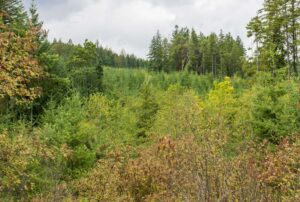 The steep flanks of Tsitika Mountain on northern Vancouver Island are scarred with clearcuts and slash piles almost to the boundary of the Tsitika Mountain and Robson Bight ecological reserves. High above the Tsitika River, 34 hectares of towering conifers, cliffs, and waterfalls are on the auction block. The parcel, labelled TA 1375 by BC Timber Sales, was recommended for deferral by BC’s advisory panel. That would have suspended logging, possibly permanently. Instead, BCTS is putting TA 1375 up for sale. …The steep and rugged terrain is a challenge for prospective loggers, but they face plenty of other obstacles. …Independent researchers at Tsitika Mountain made a surprising discovery this year: a Pacific Wild program recorded over 300 marbled murrelets flying through the area in one month.
The steep flanks of Tsitika Mountain on northern Vancouver Island are scarred with clearcuts and slash piles almost to the boundary of the Tsitika Mountain and Robson Bight ecological reserves. High above the Tsitika River, 34 hectares of towering conifers, cliffs, and waterfalls are on the auction block. The parcel, labelled TA 1375 by BC Timber Sales, was recommended for deferral by BC’s advisory panel. That would have suspended logging, possibly permanently. Instead, BCTS is putting TA 1375 up for sale. …The steep and rugged terrain is a challenge for prospective loggers, but they face plenty of other obstacles. …Independent researchers at Tsitika Mountain made a surprising discovery this year: a Pacific Wild program recorded over 300 marbled murrelets flying through the area in one month. NANAIMO, BC: Following Vancouver Island’s devastating wildfire season, Mosaic is focusing on ways it can help reduce the chances of fires starting or limit their damage. Mosaic responded to 34 wildfires in 2025—a 19% increase over the previous year’s 26 fires. This year, all five of the most significant blazes were human-caused. The first concerning fire ignited near Campbell River in early May, making 2025 one of the earliest wildfire starts for the company. The Mount Underwood wildfire near Port Alberni burned almost 2,400 hectares of Mosaic lands—roughly the size of the city of Duncan—destroying new forests and conserved old growth while causing community evacuations and road closures. Throughout the season, Mosaic’s fire crews worked with BC Wildfire Service, contractors, First Nations and emergency responders to protect communities and forests.
NANAIMO, BC: Following Vancouver Island’s devastating wildfire season, Mosaic is focusing on ways it can help reduce the chances of fires starting or limit their damage. Mosaic responded to 34 wildfires in 2025—a 19% increase over the previous year’s 26 fires. This year, all five of the most significant blazes were human-caused. The first concerning fire ignited near Campbell River in early May, making 2025 one of the earliest wildfire starts for the company. The Mount Underwood wildfire near Port Alberni burned almost 2,400 hectares of Mosaic lands—roughly the size of the city of Duncan—destroying new forests and conserved old growth while causing community evacuations and road closures. Throughout the season, Mosaic’s fire crews worked with BC Wildfire Service, contractors, First Nations and emergency responders to protect communities and forests.  Local governments are frustrated after receiving a long-awaited answer to when legislative changes are coming to the law governing how some forest lands are managed in B.C. The answer: with the trade war targeting B.C. lumber, the priority is protecting forestry jobs. …The 2003 Private Managed Forest Land (PMFL) Act puts no limit on the volume of timber that can be harvested, contrary to logging on Crown land. It’s administered by the Private Managed Forest Council, two of the five members of which have active vested interest in PMFLs. …The ministry maintains modernization to the act is being considered. In July… CBC reported the ministry is “working to modernize the act following the 2019 review.” When asked what changed between July and August, the ministry repeated it “continues to work with the Private Forest Landowners Association and the Managed Forest Council to modernize the Private Managed Forest Land Program.”
Local governments are frustrated after receiving a long-awaited answer to when legislative changes are coming to the law governing how some forest lands are managed in B.C. The answer: with the trade war targeting B.C. lumber, the priority is protecting forestry jobs. …The 2003 Private Managed Forest Land (PMFL) Act puts no limit on the volume of timber that can be harvested, contrary to logging on Crown land. It’s administered by the Private Managed Forest Council, two of the five members of which have active vested interest in PMFLs. …The ministry maintains modernization to the act is being considered. In July… CBC reported the ministry is “working to modernize the act following the 2019 review.” When asked what changed between July and August, the ministry repeated it “continues to work with the Private Forest Landowners Association and the Managed Forest Council to modernize the Private Managed Forest Land Program.”
 The Ministry of Natural Resources says nearly 6,000 square kilometres burned in Ontario this wildfire season, much more than last year and well above the province’s 10-year average. The ministry says 643 wildfires were recorded between April and October, with 597,654 hectares — or just over 5,976 square kilometres — burned. The province says 480 fires burned nearly 900 square kilometres in 2024, and the 10-year average for Ontario is 712 fires and about 2,100 square kilometres burned. Figures released by the Canadian Interagency Forest Fire Centre in August showed that Canada’s 2025 wildfire season was the second-worst on record. Those figures suggested the fires tore through 72,000 square kilometres, an area roughly the size of New Brunswick. Scientists say that climate change, driven by the burning of fossil fuels, has made Canada’s fire seasons longer and more intense.
The Ministry of Natural Resources says nearly 6,000 square kilometres burned in Ontario this wildfire season, much more than last year and well above the province’s 10-year average. The ministry says 643 wildfires were recorded between April and October, with 597,654 hectares — or just over 5,976 square kilometres — burned. The province says 480 fires burned nearly 900 square kilometres in 2024, and the 10-year average for Ontario is 712 fires and about 2,100 square kilometres burned. Figures released by the Canadian Interagency Forest Fire Centre in August showed that Canada’s 2025 wildfire season was the second-worst on record. Those figures suggested the fires tore through 72,000 square kilometres, an area roughly the size of New Brunswick. Scientists say that climate change, driven by the burning of fossil fuels, has made Canada’s fire seasons longer and more intense.
 Rising wildfire risk in the Pacific Northwest combined with volatile timber pricing may lower forestland values by as much as 50% and persuade property owners to harvest Douglas fir trees much earlier than planned, according to a new analysis. The optimal age to harvest Douglas fir trees — absent fire risk — would be 65 years. The study, from Oregon State University researchers, suggests that harvesting trees at 24 years would make the most economic sense under the worst-case scenarios. “Basically, under high wildfire risk that rises with stand age, every year you wait to harvest you’re rolling the dice,” said Mindy Crandall, an associate professor in the OSU College of Forestry. Co-author Andres Susaeta, an OSU forestry assistant professor, said the study was a simulation, but researchers are confident in the direction of results. Susaeta said earlier harvesting reduces both long-term timber revenue and impacts wood quality.
Rising wildfire risk in the Pacific Northwest combined with volatile timber pricing may lower forestland values by as much as 50% and persuade property owners to harvest Douglas fir trees much earlier than planned, according to a new analysis. The optimal age to harvest Douglas fir trees — absent fire risk — would be 65 years. The study, from Oregon State University researchers, suggests that harvesting trees at 24 years would make the most economic sense under the worst-case scenarios. “Basically, under high wildfire risk that rises with stand age, every year you wait to harvest you’re rolling the dice,” said Mindy Crandall, an associate professor in the OSU College of Forestry. Co-author Andres Susaeta, an OSU forestry assistant professor, said the study was a simulation, but researchers are confident in the direction of results. Susaeta said earlier harvesting reduces both long-term timber revenue and impacts wood quality.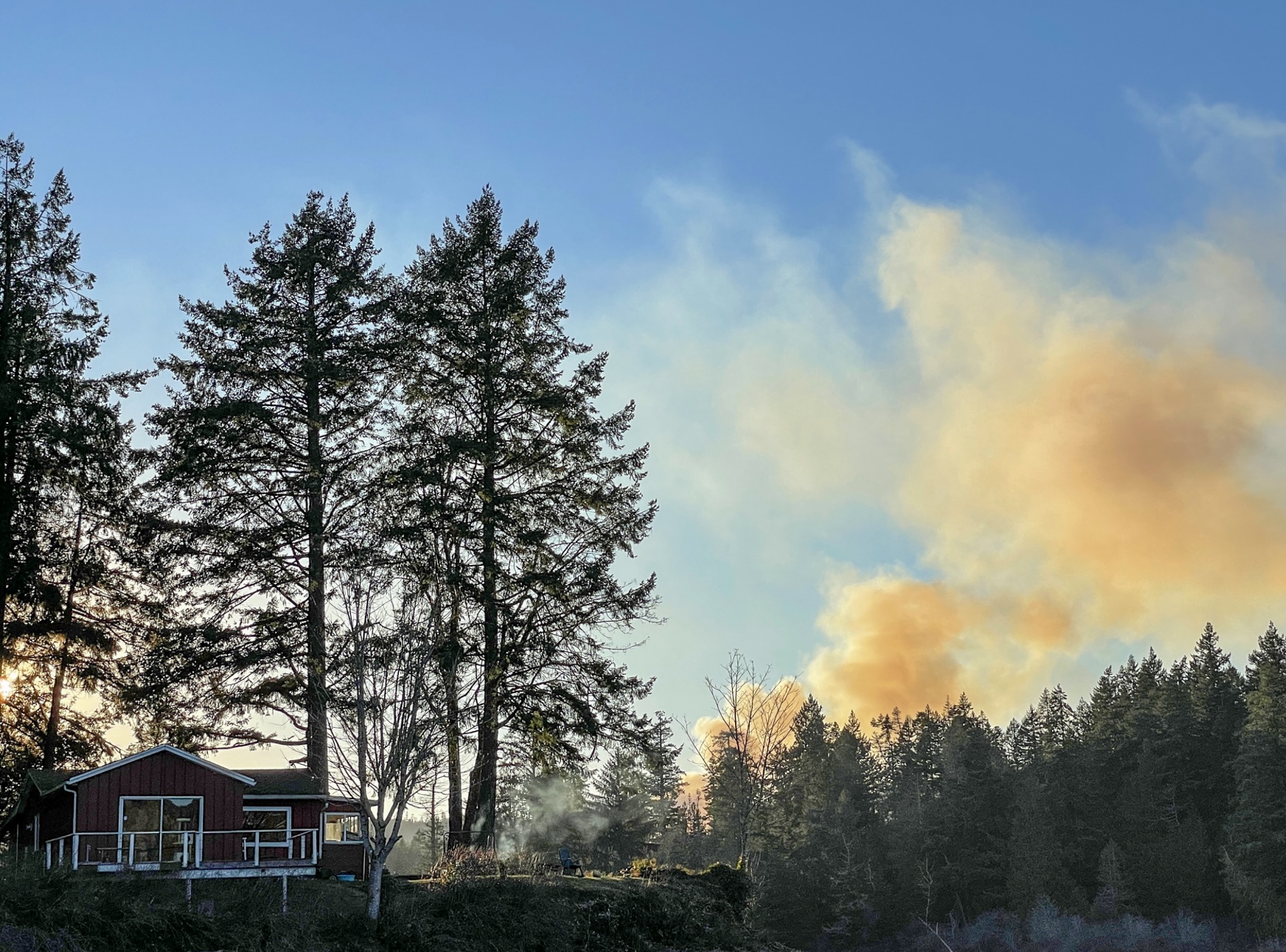 Policies by the Trump administration are putting communities at increased risk for wildfire because federal funding for fuels treatment work is becoming more difficult to obtain. That is the opinion of a group of policymakers and politicians who convened in Bend last week to discuss how best to manage local forests. Bend Mayor Melanie Kebler, Deschutes County Commissioner Phil Chang and State Senator Anthony Broadman — all Democrats — were among those in attendance… Members of the group said there is a lack of clarity over future treatments in the Deschutes National Forest following years of mitigation work that cleared the forest floor of fuels and thinned areas to prevent a fast-moving crown fire. …Chang said he is especially concerned with the Trump administration’s Fix our Forest Act … The bill relies mostly on logging and cattle grazing to clear fuels that cause catastrophic wildfire, but funding for prescribed burning isn’t part of the legislation.
Policies by the Trump administration are putting communities at increased risk for wildfire because federal funding for fuels treatment work is becoming more difficult to obtain. That is the opinion of a group of policymakers and politicians who convened in Bend last week to discuss how best to manage local forests. Bend Mayor Melanie Kebler, Deschutes County Commissioner Phil Chang and State Senator Anthony Broadman — all Democrats — were among those in attendance… Members of the group said there is a lack of clarity over future treatments in the Deschutes National Forest following years of mitigation work that cleared the forest floor of fuels and thinned areas to prevent a fast-moving crown fire. …Chang said he is especially concerned with the Trump administration’s Fix our Forest Act … The bill relies mostly on logging and cattle grazing to clear fuels that cause catastrophic wildfire, but funding for prescribed burning isn’t part of the legislation. 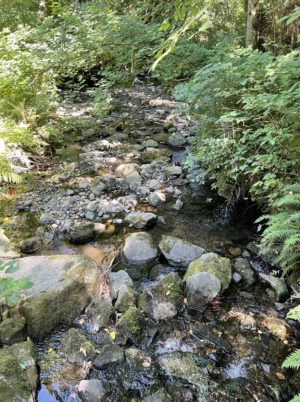 The Washington Forest Practices Board may vote Nov. 12 to widen and lengthen riparian buffers, taking millions of dollars worth of timber out of production. Forest landowners and the wood-products are mounting a last-ditch effort to persuade the board to not adopt what they say would be a massive taking of private property. The state Department of Ecology says wider and longer buffers would keep timber harvests from raising temperatures in non-fish bearing streams in most cases. Timber groups haven’t been in a battle this divisive since the industry, state agencies and tribes settled on seminal logging rules in 1999, Washington Forest Protection Association’s Darin Cramer said. …Studies confirmed logging raises water temperatures. The timber industry argues that even if temperatures rise, they soon go down and generally do not exceed acceptable levels. Massachusetts-based consultant Industrial Economics estimates the rule will take somewhere between 67,000 acres and 170,000 acres out of production.
The Washington Forest Practices Board may vote Nov. 12 to widen and lengthen riparian buffers, taking millions of dollars worth of timber out of production. Forest landowners and the wood-products are mounting a last-ditch effort to persuade the board to not adopt what they say would be a massive taking of private property. The state Department of Ecology says wider and longer buffers would keep timber harvests from raising temperatures in non-fish bearing streams in most cases. Timber groups haven’t been in a battle this divisive since the industry, state agencies and tribes settled on seminal logging rules in 1999, Washington Forest Protection Association’s Darin Cramer said. …Studies confirmed logging raises water temperatures. The timber industry argues that even if temperatures rise, they soon go down and generally do not exceed acceptable levels. Massachusetts-based consultant Industrial Economics estimates the rule will take somewhere between 67,000 acres and 170,000 acres out of production.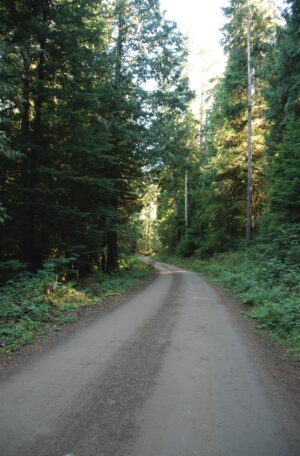 Every year, there are thousands of landslides in Oregon. Geologists say the number is increasing due to climate change. …Swaths of the Pacific Northwest are particularly prone, thanks to a combination of mountainous landscape and heavy rainfall. “Over the last couple decades, the landslides and the surface processes and surface hazards that I’ve been working on have become much more prominent, primarily due to climate change and humans inhabiting more areas in hazardous terrain,” said Josh Roering, a professor of earth sciences at the University of Oregon. …Roering is one of the geologists involved in the newly formed Center for Land Surface Hazards (CLaSH). A $15 million NSF grant jumpstarted the center that will study landslides and other surface hazards. While CLaSH is housed in the University of Michigan, it is a collaboration with more than a dozen academic, governmental and community partners across the country.
Every year, there are thousands of landslides in Oregon. Geologists say the number is increasing due to climate change. …Swaths of the Pacific Northwest are particularly prone, thanks to a combination of mountainous landscape and heavy rainfall. “Over the last couple decades, the landslides and the surface processes and surface hazards that I’ve been working on have become much more prominent, primarily due to climate change and humans inhabiting more areas in hazardous terrain,” said Josh Roering, a professor of earth sciences at the University of Oregon. …Roering is one of the geologists involved in the newly formed Center for Land Surface Hazards (CLaSH). A $15 million NSF grant jumpstarted the center that will study landslides and other surface hazards. While CLaSH is housed in the University of Michigan, it is a collaboration with more than a dozen academic, governmental and community partners across the country. 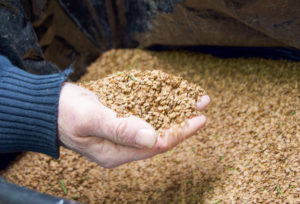 Miles Ryan checked his harness one last time, gave an assured look to his ground crew, and started to climb. …There, balanced at the top of the forest, Ryan leaned out toward the tips of the limbs to get what he’d come for: cones. It was one of Cal Fire’s last cone samplings of the season, which usually runs from August to October across state forests and conifer species. Each cone contains anywhere from a few dozen to hundreds of precious seeds. These have become more important in recent years, as an uptick in severe wildfires and the spread of insects and diseases have led to mass deaths of pines across California forests. But there are just a few dozen professional tree climbers like Ryan trained for high-elevation seed collection in California. …Cal Fire needs to collect 55,978 bushels of cones across species and locales to fully stock its seed bank.
Miles Ryan checked his harness one last time, gave an assured look to his ground crew, and started to climb. …There, balanced at the top of the forest, Ryan leaned out toward the tips of the limbs to get what he’d come for: cones. It was one of Cal Fire’s last cone samplings of the season, which usually runs from August to October across state forests and conifer species. Each cone contains anywhere from a few dozen to hundreds of precious seeds. These have become more important in recent years, as an uptick in severe wildfires and the spread of insects and diseases have led to mass deaths of pines across California forests. But there are just a few dozen professional tree climbers like Ryan trained for high-elevation seed collection in California. …Cal Fire needs to collect 55,978 bushels of cones across species and locales to fully stock its seed bank.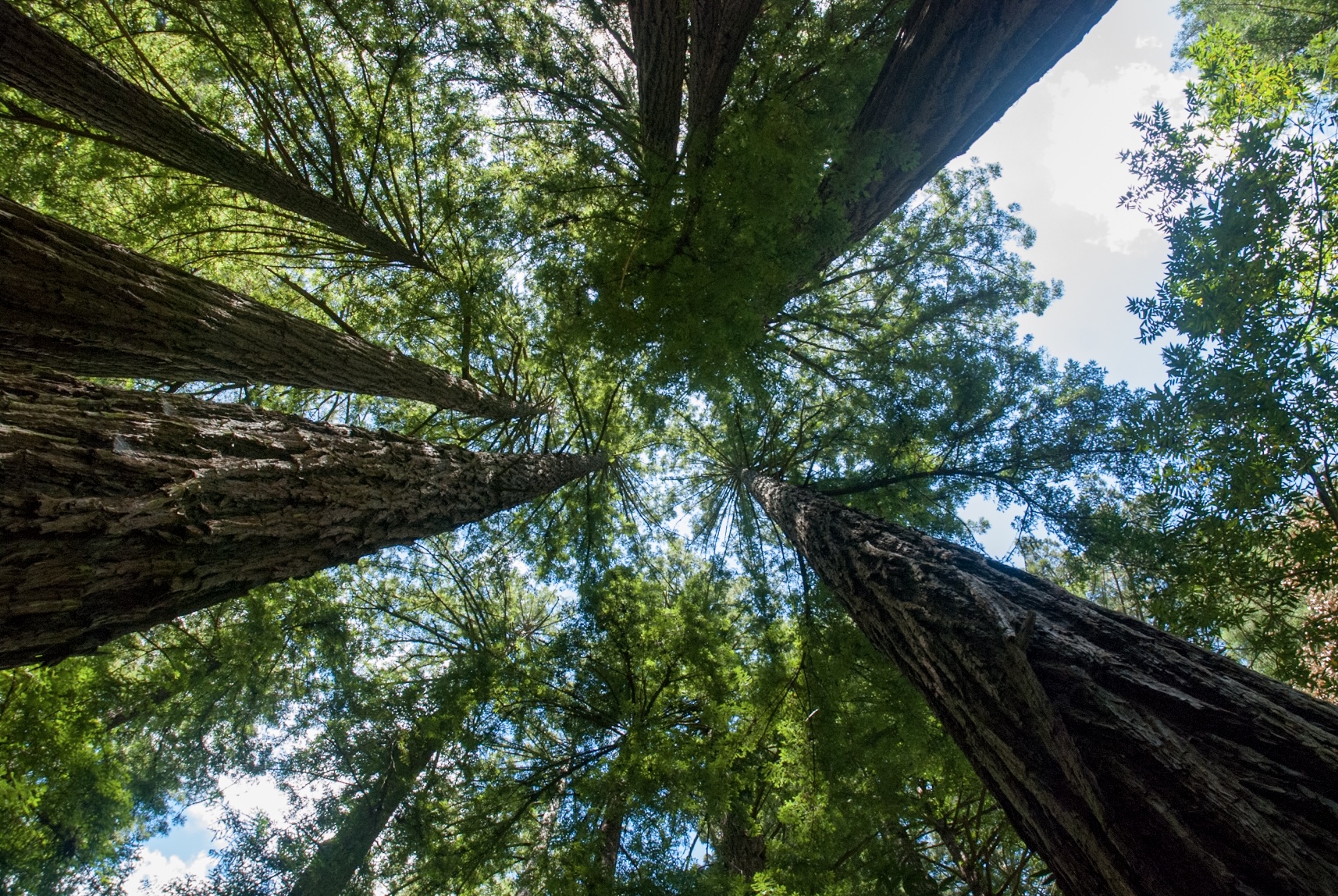 Cal Poly Humboldt study in partnership with Save the Redwoods League reveals how second-growth forests respond to modern wildfires and what managers can do to protect them. California’s coast redwoods have stood for centuries, weathering a changing climate, logging, and time itself. But in an era of hotter, more frequent wildfires, their future resilience depends on how we care for them, according to new research published in Forest Ecology and Management. The study sought to understand the effects of wildfire on coast redwoods—the tallest trees in the world. Results revealed that redwoods in second-growth forests largely survived extreme wildfires in 2020 and quickly resprouted from their trunks and bases. Researchers also discovered that forest structure—how dense the trees are and which species are present—strongly influences fire severity, highlighting the importance of management efforts such as thinning, reducing fuel loads, and encouraging fire-resistant species.
Cal Poly Humboldt study in partnership with Save the Redwoods League reveals how second-growth forests respond to modern wildfires and what managers can do to protect them. California’s coast redwoods have stood for centuries, weathering a changing climate, logging, and time itself. But in an era of hotter, more frequent wildfires, their future resilience depends on how we care for them, according to new research published in Forest Ecology and Management. The study sought to understand the effects of wildfire on coast redwoods—the tallest trees in the world. Results revealed that redwoods in second-growth forests largely survived extreme wildfires in 2020 and quickly resprouted from their trunks and bases. Researchers also discovered that forest structure—how dense the trees are and which species are present—strongly influences fire severity, highlighting the importance of management efforts such as thinning, reducing fuel loads, and encouraging fire-resistant species.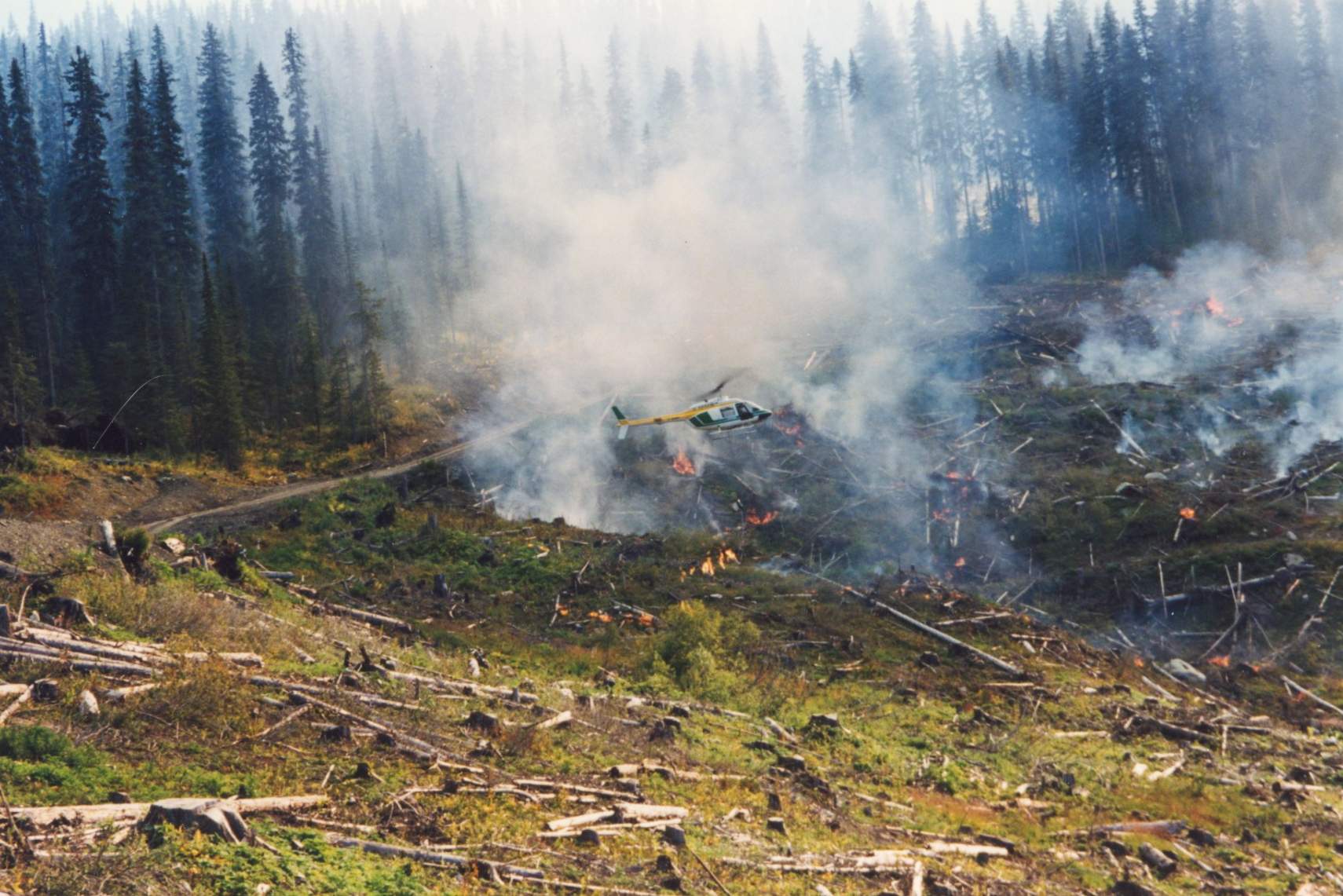 A bipartisan piece of legislation that could have big impacts on the nation’s forest land continues to move quickly through Congress, pushing through a Senate committee last month. The Fix Our Forests Act was introduced in the U.S. Senate in April and co-sponsored by Sen. Tim Sheehy, along with Senators from California, Utah and Colorado. The legislation seeks to promote prescribed burns, expand the state-federal Good Neighbor Authority program, increase collaboration among fire agencies and improve reforestation efforts after fires. It also makes some rule changes that could impact how areas designated as high fire danger are managed and how projects in those areas proceed. …The legislation has received some support from environmental and outdoor advocacy groups… But there has also been some concern with it, namely around how it could change the process of forest projects, especially those in a declared “emergency fireshed management” area.
A bipartisan piece of legislation that could have big impacts on the nation’s forest land continues to move quickly through Congress, pushing through a Senate committee last month. The Fix Our Forests Act was introduced in the U.S. Senate in April and co-sponsored by Sen. Tim Sheehy, along with Senators from California, Utah and Colorado. The legislation seeks to promote prescribed burns, expand the state-federal Good Neighbor Authority program, increase collaboration among fire agencies and improve reforestation efforts after fires. It also makes some rule changes that could impact how areas designated as high fire danger are managed and how projects in those areas proceed. …The legislation has received some support from environmental and outdoor advocacy groups… But there has also been some concern with it, namely around how it could change the process of forest projects, especially those in a declared “emergency fireshed management” area.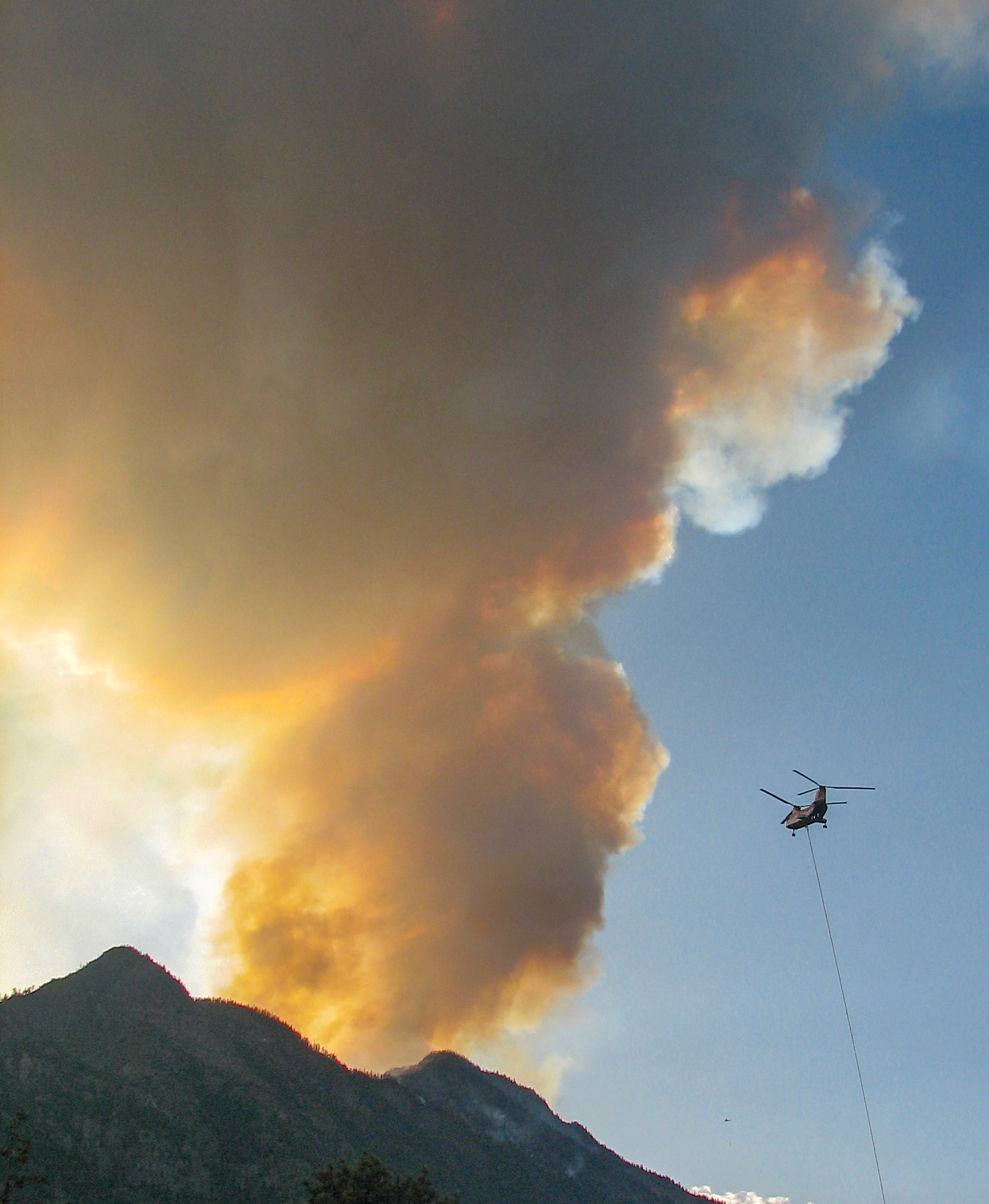 Albuquerque, NM — A new report by Grassroots Wildland Firefighters reveals a troubling decline in wildfire prevention work across the nation. According to the report, hazardous fuel reduction efforts on U.S. Forest Service land are down 38% since January 2025 compared to recent years, following significant federal budget cuts to staffing and resources. Hazardous fuel treatments are critical in preventing catastrophic wildfires. These projects include thinning overgrown forests, clearing brush, and conducting prescribed burns to reduce the vegetation that feeds wildfires. The group’s findings directly contradict recent public assurances from administration officials that land management agencies remain adequately funded and staffed. …The analysis shows mitigation work has fallen especially low in Idaho and Montana, where fewer than 30% of acres have been treated this year compared to previous averages. …Grassroots Wildland Firefighters warn that unless funding is restored, the nation’s wildfire season will grow increasingly severe and dangerous in the years ahead.
Albuquerque, NM — A new report by Grassroots Wildland Firefighters reveals a troubling decline in wildfire prevention work across the nation. According to the report, hazardous fuel reduction efforts on U.S. Forest Service land are down 38% since January 2025 compared to recent years, following significant federal budget cuts to staffing and resources. Hazardous fuel treatments are critical in preventing catastrophic wildfires. These projects include thinning overgrown forests, clearing brush, and conducting prescribed burns to reduce the vegetation that feeds wildfires. The group’s findings directly contradict recent public assurances from administration officials that land management agencies remain adequately funded and staffed. …The analysis shows mitigation work has fallen especially low in Idaho and Montana, where fewer than 30% of acres have been treated this year compared to previous averages. …Grassroots Wildland Firefighters warn that unless funding is restored, the nation’s wildfire season will grow increasingly severe and dangerous in the years ahead.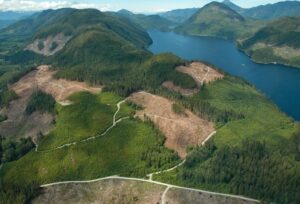 CORVALLIS, Oregon – Rising wildfire risk in the Pacific Northwest combined with notoriously volatile timber pricing may lower forestland values by as much as 50% and persuade plantation owners to harvest trees much earlier than planned, a
CORVALLIS, Oregon – Rising wildfire risk in the Pacific Northwest combined with notoriously volatile timber pricing may lower forestland values by as much as 50% and persuade plantation owners to harvest trees much earlier than planned, a 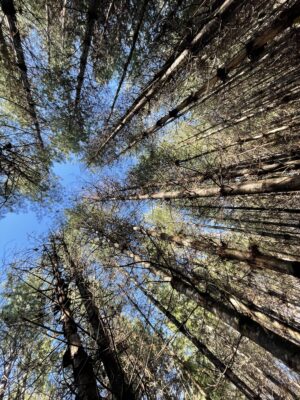 BOISI, Idaho — The Trump Administration’s decision earlier this year to do away with the 2001 Roadless Area Conseravtion Rule on national forest lands sent shockwaves through environmental and outdoor recreation communities. According to environmentalists and an Idaho public official who has been involved in roadless rule politics since the issue’s inception, the move could transport stakeholders in the Pacific Northwest back to the rancor and political divisions of the timber war years. …“The national rule itself put the whole timber wars to bed. It really did,” said James Caswell, former director of the Bureau of Land Management. …The rule led to conditions in which environmentalists became less combative about forest management, according to Caswell. Instead, enviros became more willing to work with timber industry and Forest Service officials. …The decision puts the forest objectives of fishermen, hunters, ATVers, bird watchers and others on the back burner.
BOISI, Idaho — The Trump Administration’s decision earlier this year to do away with the 2001 Roadless Area Conseravtion Rule on national forest lands sent shockwaves through environmental and outdoor recreation communities. According to environmentalists and an Idaho public official who has been involved in roadless rule politics since the issue’s inception, the move could transport stakeholders in the Pacific Northwest back to the rancor and political divisions of the timber war years. …“The national rule itself put the whole timber wars to bed. It really did,” said James Caswell, former director of the Bureau of Land Management. …The rule led to conditions in which environmentalists became less combative about forest management, according to Caswell. Instead, enviros became more willing to work with timber industry and Forest Service officials. …The decision puts the forest objectives of fishermen, hunters, ATVers, bird watchers and others on the back burner.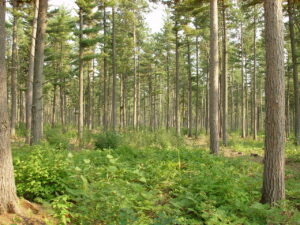 PORTLAND, Oregon — The question of whether two logging companies conspired to monopolize markets in an eastern Oregon forest came before a three-judge panel of the Ninth Circuit on Wednesday as a coalition urged the court to revive its antitrust challenge. US Circuit Judge Milan Smith noted the case was unlike other antitrust suits. …In 2013, the U.S. Forest Service granted the logging company Iron Triangle a 10-year stewardship contract for the Malheur National Forest, as well as associated logging rights. A group of landowners, loggers and an eastern Oregon lumber sawmill — known collectively as the Malheur Forest Coalition — sued Iron Triangle in 2022, arguing that the company exploited control of the contract and should be blocked from competing for harvest rights in U.S. Forest Service public auctions. The lower court denied the request, prompting a new complaint adding the Malheur Lumber Company as a defendant.
PORTLAND, Oregon — The question of whether two logging companies conspired to monopolize markets in an eastern Oregon forest came before a three-judge panel of the Ninth Circuit on Wednesday as a coalition urged the court to revive its antitrust challenge. US Circuit Judge Milan Smith noted the case was unlike other antitrust suits. …In 2013, the U.S. Forest Service granted the logging company Iron Triangle a 10-year stewardship contract for the Malheur National Forest, as well as associated logging rights. A group of landowners, loggers and an eastern Oregon lumber sawmill — known collectively as the Malheur Forest Coalition — sued Iron Triangle in 2022, arguing that the company exploited control of the contract and should be blocked from competing for harvest rights in U.S. Forest Service public auctions. The lower court denied the request, prompting a new complaint adding the Malheur Lumber Company as a defendant.
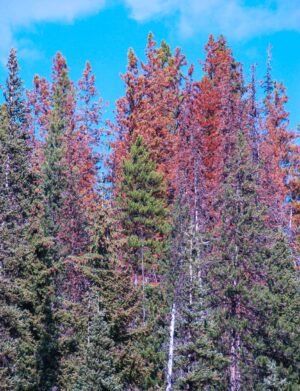
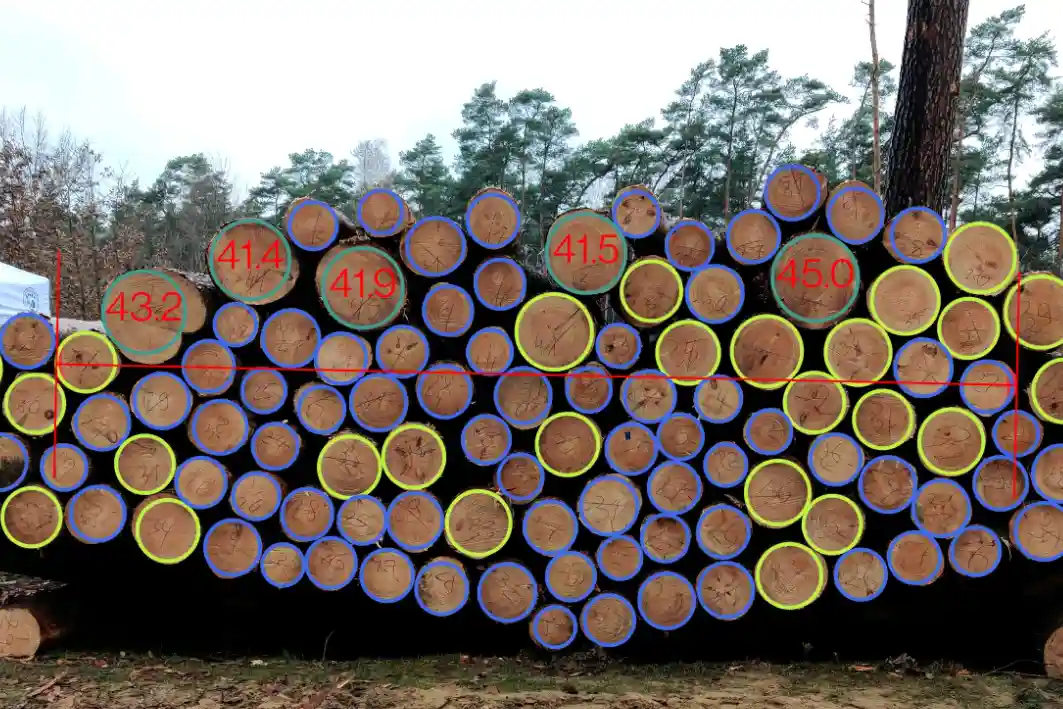
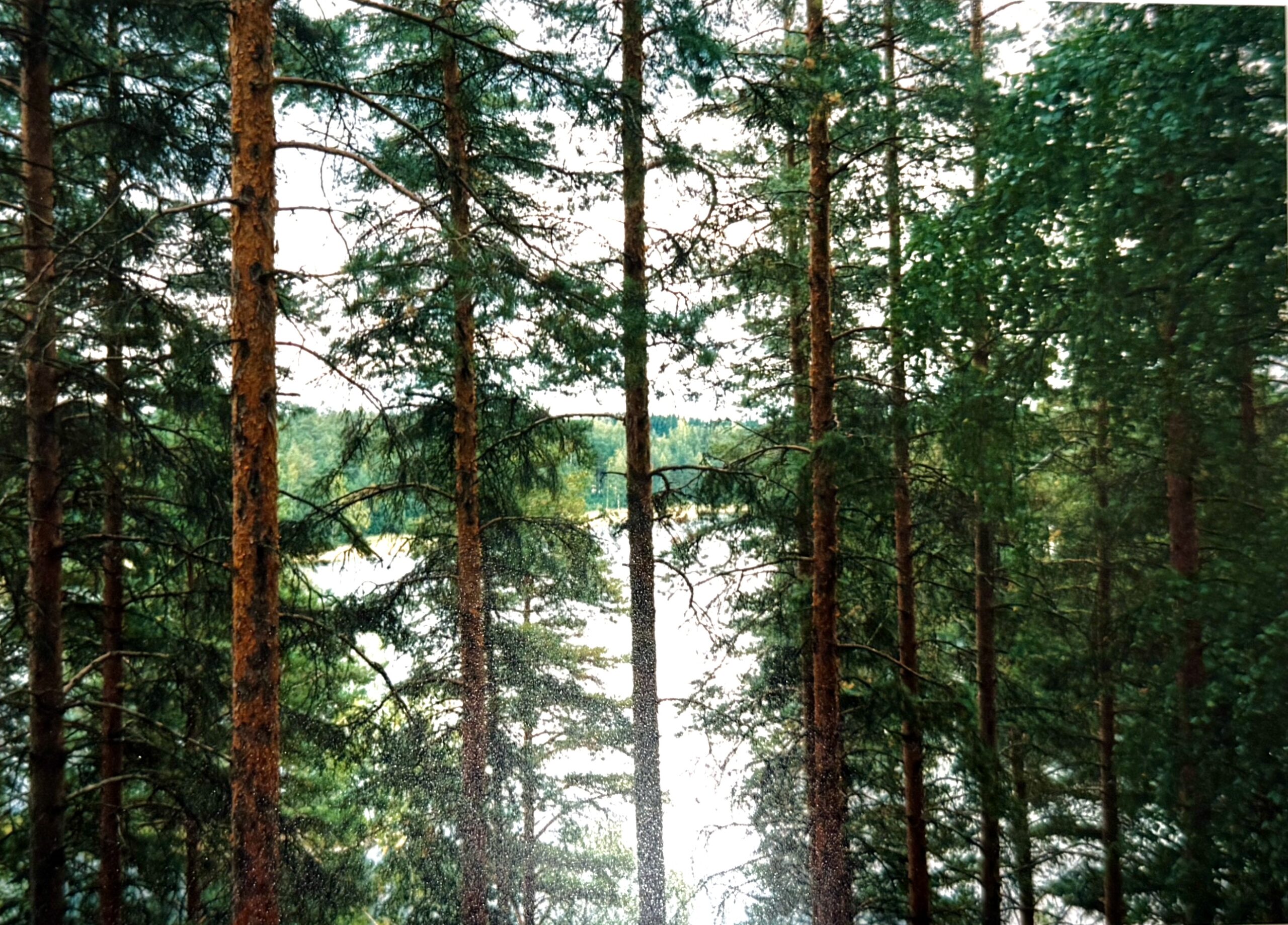 Sweden is one of the world’s largest exporters of forest-based products… Decisions made in Sweden about how forests are managed ripple outward far beyond the kingdom’s borders. That is why the Swedish government’s recent forestry inquiry should matter not just to those living in Sweden, but to anyone concerned about the global climate crisis. The inquiry’s central message is clear: increase forest growth, harvest more biomass, and thereby contribute to the green transition. This might sound promising. More trees mean more carbon absorbed, more wood products to replace unsustainable products. But the plan overlooks the most important part of the forest: the soil. …The government’s proposal even encourages fertilization with nitrogen to speed up tree growth. This can work in the short term, but after a decade, the effect largely disappears. …If Sweden does not get this right, what happens in Sweden’s forests will not stay in Sweden’s forests.
Sweden is one of the world’s largest exporters of forest-based products… Decisions made in Sweden about how forests are managed ripple outward far beyond the kingdom’s borders. That is why the Swedish government’s recent forestry inquiry should matter not just to those living in Sweden, but to anyone concerned about the global climate crisis. The inquiry’s central message is clear: increase forest growth, harvest more biomass, and thereby contribute to the green transition. This might sound promising. More trees mean more carbon absorbed, more wood products to replace unsustainable products. But the plan overlooks the most important part of the forest: the soil. …The government’s proposal even encourages fertilization with nitrogen to speed up tree growth. This can work in the short term, but after a decade, the effect largely disappears. …If Sweden does not get this right, what happens in Sweden’s forests will not stay in Sweden’s forests.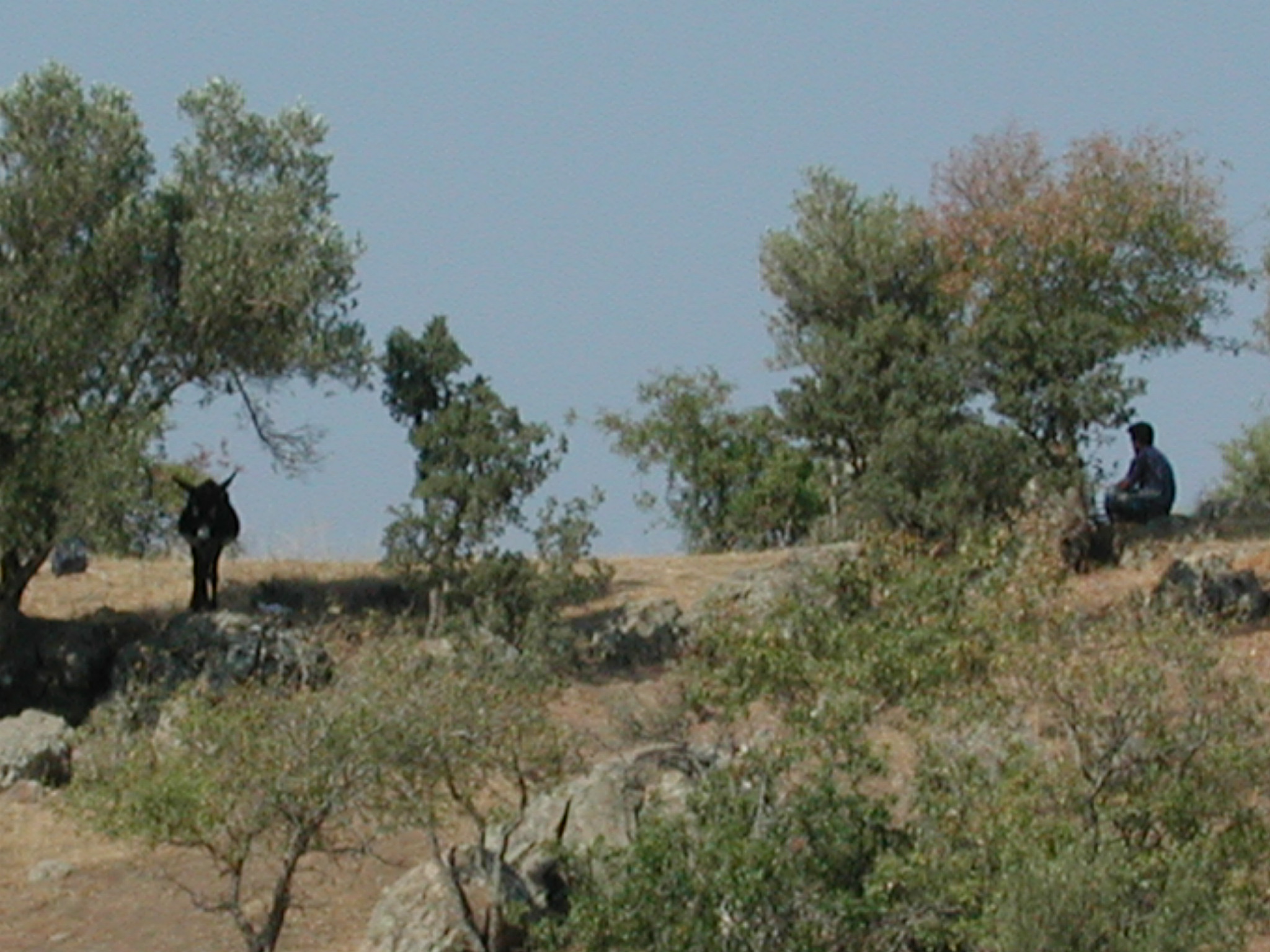 The Ministry of Family and Social Services and the Ministry of Agriculture and Forestry have launched the “Every Family One Sapling Our Green Homeland” campaign, a joint initiative that plants a sapling in the name of every newborn baby and newlywed couple across Türkiye. The project aims to support environmental sustainability while promoting demographic growth and family values. Announced within the framework of the “November 11 National Forestation Day,” declared by President Recep Tayyip Erdoğan, the campaign reflects Türkiye’s commitment to both population development and ecological preservation. The initiative is designed to strengthen the country’s ongoing “Green Homeland Mobilization” by encouraging citizens to contribute to afforestation efforts starting from birth or marriage. As part of the campaign’s official launch, Family and Social Services Minister Mahinur Özdemir Göktaş and Agriculture and Forestry Minister Ibrahim Yumaklı visited Ankara Bilkent City Hospital to meet with newborn babies and their families.
The Ministry of Family and Social Services and the Ministry of Agriculture and Forestry have launched the “Every Family One Sapling Our Green Homeland” campaign, a joint initiative that plants a sapling in the name of every newborn baby and newlywed couple across Türkiye. The project aims to support environmental sustainability while promoting demographic growth and family values. Announced within the framework of the “November 11 National Forestation Day,” declared by President Recep Tayyip Erdoğan, the campaign reflects Türkiye’s commitment to both population development and ecological preservation. The initiative is designed to strengthen the country’s ongoing “Green Homeland Mobilization” by encouraging citizens to contribute to afforestation efforts starting from birth or marriage. As part of the campaign’s official launch, Family and Social Services Minister Mahinur Özdemir Göktaş and Agriculture and Forestry Minister Ibrahim Yumaklı visited Ankara Bilkent City Hospital to meet with newborn babies and their families.


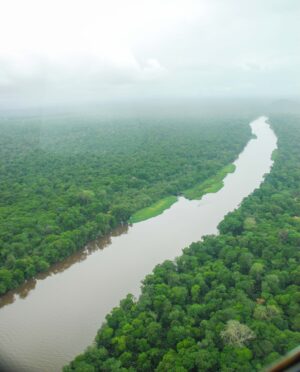 BOGOTA, Colombia — Interpol and partners launched a global law enforcement effort Wednesday aimed at dismantling criminal networks behind illegal logging, timber trafficking and gold mining, which drive large-scale deforestation and generate billions in illicit profits each year. The effort announced ahead of the UN COP30 climate summit in Brazil will focus mainly on tropical forests in Brazil, Ecuador, Indonesia, Papua New Guinea and Peru. “Criminals are making billions by looting the planet’s forests,” Interpol Secretary General Valdecy Urquiza said. “The only way to stop them is through determined law enforcement action and strong international cooperation.” …The announcement follows a major crackdown in the Amazon Basin last week, when Brazilian police, supported by Interpol, destroyed more than 270 illegal mining dredges operating on the Madeira River. Authorities said the raids dealt a significant blow to criminal groups linked to gold-smuggling networks that span Brazil, Bolivia and Peru.
BOGOTA, Colombia — Interpol and partners launched a global law enforcement effort Wednesday aimed at dismantling criminal networks behind illegal logging, timber trafficking and gold mining, which drive large-scale deforestation and generate billions in illicit profits each year. The effort announced ahead of the UN COP30 climate summit in Brazil will focus mainly on tropical forests in Brazil, Ecuador, Indonesia, Papua New Guinea and Peru. “Criminals are making billions by looting the planet’s forests,” Interpol Secretary General Valdecy Urquiza said. “The only way to stop them is through determined law enforcement action and strong international cooperation.” …The announcement follows a major crackdown in the Amazon Basin last week, when Brazilian police, supported by Interpol, destroyed more than 270 illegal mining dredges operating on the Madeira River. Authorities said the raids dealt a significant blow to criminal groups linked to gold-smuggling networks that span Brazil, Bolivia and Peru.